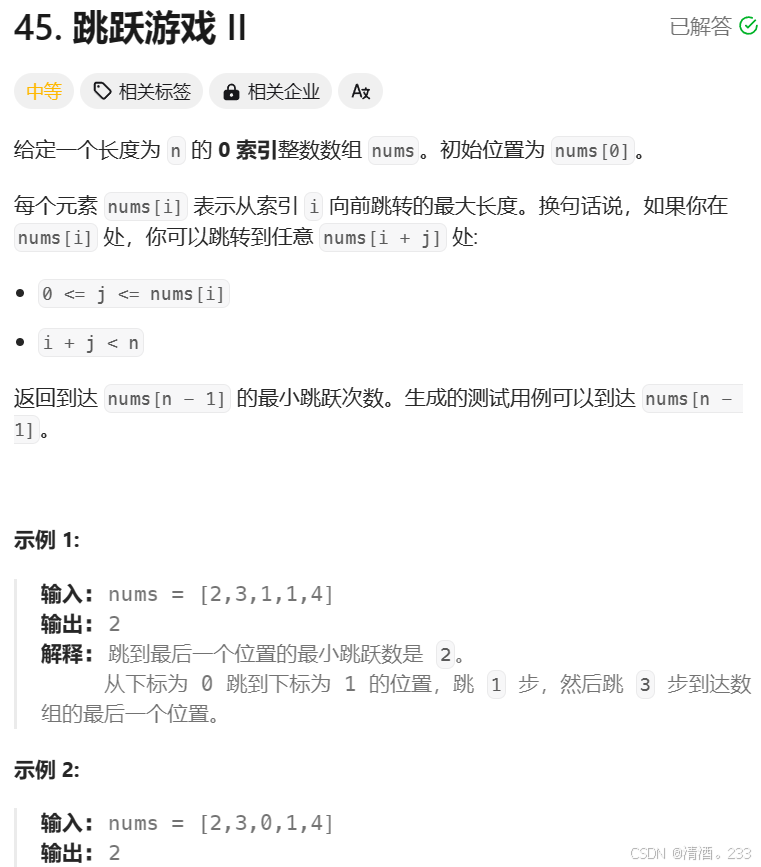
class Solution {
public:int jump(vector<int>& nums) {if (nums.size() == 1) return 0; // 如果数组长度为1,已经在终点,不需要跳跃int cur = 0; // 当前跳跃能到达的最远位置int flag = 0; // 记录跳跃次数int next = 0; // 下一次跳跃能到达的最远位置for (int i = 0; i < nums.size(); i++){next = max(i + nums[i], next); // 更新下一次跳跃能到达的最远位置if (i == cur) // 当遍历到当前跳跃的最远位置时{flag++; // 增加跳跃次数cur = next; // 更新当前跳跃的最远位置if (next >= nums.size() - 1) break; // 如果下一次跳跃能到达终点,结束循环}}return flag; // 返回跳跃次数}
};
核心思想
该算法使用贪心策略,每次选择当前能跳跃的最远位置,并更新下一次能跳跃的最远位置。遍历过程中,每当到达当前能跳跃的最远位置时,增加跳跃次数,并更新当前跳跃能到达的最远位置。如果在更新过程中,发现能到达或超过终点,跳出循环。
示例
考虑 nums = [2, 3, 1, 1, 4]:
- 初始
cur = 0,flag = 0,next = 0。 - 第一次循环:
i = 0:next = max(0 + 2, 0) = 2i == cur,跳跃次数增加:flag = 1,更新cur = next = 2
- 第二次循环:
i = 1:next = max(1 + 3, 2) = 4i == cur,跳跃次数增加:flag = 2,更新cur = next = 4- 终点可达,跳出循环
最终返回 flag = 2,表示最少需要跳跃两次。


 四数相加 赎金信)




 --华中科技大学)

方法)




)




)